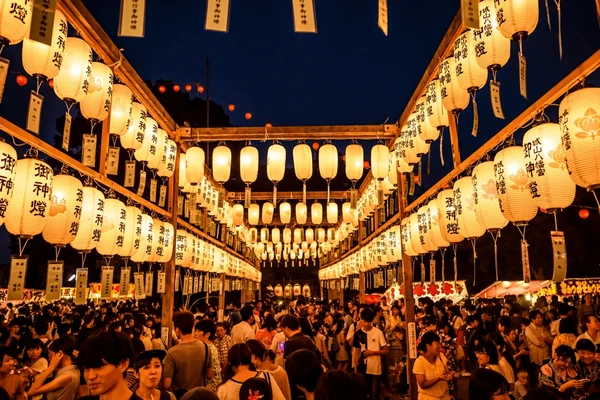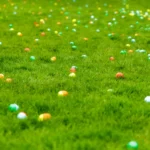Japan’s cultural landscape is rich with unique festivals, and among them, Yahatai Kodosai stands out as a captivating celebration. This vibrant event, deeply rooted in tradition, draws visitors from across the country and around the world. Yahatai Kodosai showcases the essence of Japanese community spirit and cultural preservation, offering a glimpse into the nation’s heritage and contemporary social fabric.
The festival brings together ancient customs and modern festivities, creating an unforgettable experience for participants and spectators alike. From its historical origins to its key elements and the efforts to keep it alive for future generations, Yahatai Kodosai has an impact on Japanese culture that goes beyond mere entertainment. This article explores the various aspects of this remarkable festival, shedding light on its significance and the role it plays in Japan’s cultural identity.
The Origins and History of Yahatai Kodosai
The Yahatai Kodosai festival has a rich history deeply rooted in Japanese culture. This unique celebration has evolved over time, becoming an integral part of Japan’s cultural landscape.
Ancient Roots
The origins of Yahatai Kodosai can be traced back to ancient Japanese traditions. While specific details about its inception are not available, the festival likely emerged from local customs and beliefs. Like many Japanese festivals, it may have started as a way to honor deities, celebrate harvests, or mark important seasonal changes.
Evolution Over Time
As centuries passed, Yahatai Kodosai adapted to changing social and cultural norms. The festival incorporated new elements while preserving its core traditions. This evolution reflects the dynamic nature of Japanese society, blending ancient practices with modern sensibilities. Over time, the festival has grown in scale and popularity, attracting participants from various regions of Japan.
Cultural Significance
Yahatai Kodosai has an impact on Japanese culture that extends beyond mere entertainment. It serves as a living link to Japan’s past, helping to preserve traditional customs and values. The festival plays a crucial role in strengthening community bonds and fostering a sense of shared identity among participants. It also provides an opportunity for younger generations to connect with their cultural heritage, ensuring the continuity of these traditions.
As a showcase of Japanese community spirit and cultural preservation, Yahatai Kodosai offers valuable insights into the nation’s heritage. Its enduring popularity demonstrates the importance of maintaining cultural traditions in modern society. The festival continues to captivate both locals and visitors, serving as a vibrant expression of Japan’s rich cultural tapestry.
Key Elements of the Festival
Traditional Costumes
The Yahatai Kodosai festival showcases a vibrant array of traditional costumes that reflect the rich cultural heritage of Japan. These outfits play a crucial role in the festival’s visual appeal and cultural significance. Participants don elaborate garments that vary in style, color, and design, each representing different regions or historical periods. The costumes often feature intricate embroidery, vibrant patterns, and symbolic elements that tell stories of Japan’s past and present.
Ritual Performances
At the heart of Yahatai Kodosai are the ritual performances that captivate audiences and honor ancient traditions. These performances often include traditional dances, music, and theatrical presentations that have been passed down through generations. Skilled performers enact stories from Japanese folklore, historical events, or religious narratives, bringing them to life for festival-goers. The rhythmic sounds of taiko drums, the graceful movements of dancers, and the melodic tones of traditional instruments create an immersive experience that transports spectators to another time.
Symbolic Decorations
The festival grounds are adorned with symbolic decorations that enhance the atmosphere and convey deeper meanings. Lanterns, banners, and floral arrangements are strategically placed throughout the venue, each carrying its own significance. These decorations often incorporate traditional Japanese motifs such as cherry blossoms, cranes, or mythical creatures. Intricate paper crafts, colorful streamers, and handmade ornaments add to the festive ambiance, creating a visually stunning environment that celebrates Japanese artistry and craftsmanship.
The Festival Experience
Processions and Parades
The Yahatai Kodosai festival comes alive with vibrant processions and parades that wind through the streets. Participants don traditional costumes, creating a colorful spectacle that captivates onlookers. These processions often feature elaborate floats, each representing different aspects of Japanese culture and history. The rhythmic sounds of taiko drums and traditional music fill the air, adding to the festive atmosphere. Spectators line the streets, cheering and applauding as the parade passes by, creating a sense of community and shared excitement.
Food and Drink
No festival is complete without delicious food and drink, and Yahatai Kodosai is no exception. The festival grounds are dotted with food stalls offering a wide array of traditional Japanese delicacies. Visitors can savor local specialties and seasonal treats, from savory street food to sweet desserts. The aroma of grilled yakitori, freshly made takoyaki, and steaming bowls of ramen wafts through the air, tempting festival-goers. Traditional beverages such as sake and green tea are also available, allowing visitors to experience the full range of Japanese culinary traditions.
Interactive Activities
Yahatai Kodosai offers numerous interactive activities that engage visitors of all ages. Workshops and demonstrations allow participants to try their hand at traditional Japanese arts and crafts, such as origami, calligraphy, or tea ceremony. Game booths featuring classic festival games like kingyo-sukui (goldfish scooping) and ring toss provide entertainment for children and adults alike. Some festivals may also include cultural performances where visitors can learn traditional dances or try playing musical instruments. These interactive elements not only entertain but also provide a deeper understanding of Japanese culture and traditions.
Preserving Yahatai Kodosai for Future Generations
The preservation of Yahatai Kodosai, like many cultural traditions, faces numerous challenges in the modern world. However, concerted efforts are being made to ensure its continuity for future generations. This section explores the obstacles, conservation initiatives, and the crucial role of youth involvement in maintaining this vibrant festival.
Challenges Faced
Yahatai Kodosai, like other religious and cultural traditions, confronts significant threats to its preservation. Environmental factors, including pollution and climate change, have an impact on the physical aspects of the festival, such as decorations and outdoor venues. Additionally, human actions, including vandalism in places of worship, pose a risk to the integrity of the celebration. These challenges create a complex landscape that requires immediate attention to prevent the loss of this precious cultural heritage.
Conservation Efforts
Recognizing the importance of preserving Yahatai Kodosai, various conservation efforts have been initiated. These initiatives draw inspiration from broader cultural preservation strategies. For instance, the Jewish concept of “tikkun olam” emphasizes the responsibility to repair and heal the world, which can be applied to cultural conservation. Conservation efforts focus on documenting traditional practices, restoring artifacts, and creating awareness about the festival’s significance. These actions aim to protect the festival’s tangible and intangible elements for future generations.
Youth Involvement
The involvement of young people is crucial in ensuring the longevity of Yahatai Kodosai. Drawing parallels from other cultural preservation efforts, youth engagement has shown remarkable results. Programs similar to URJ camps, NFTY, and L’Taken Social Justice Seminars have successfully connected young people with their cultural heritage. In the context of Yahatai Kodosai, efforts are being made to involve teenagers in festival organization, performance, and promotion. This engagement not only ensures the transfer of knowledge but also allows for the festival’s evolution in ways that resonate with younger generations.
Conclusion
Yahatai Kodosai stands as a vibrant testament to Japan’s rich cultural heritage, blending ancient traditions with modern celebrations. This unique festival has an impact on Japanese society that goes beyond mere entertainment, serving as a living link to the past while fostering community bonds and preserving cultural values. Through its colorful costumes, captivating performances, and interactive activities, Yahatai Kodosai offers both locals and visitors a chance to experience the depth and beauty of Japanese traditions.
As we look to the future, the preservation of Yahatai Kodosai faces challenges, but ongoing efforts to protect and promote this cultural treasure show promise. By getting young people involved and adapting to changing times, the festival continues to evolve while staying true to its roots. Yahatai Kodosai not only celebrates Japan’s past but also plays a crucial role in shaping its cultural identity for generations to come.











